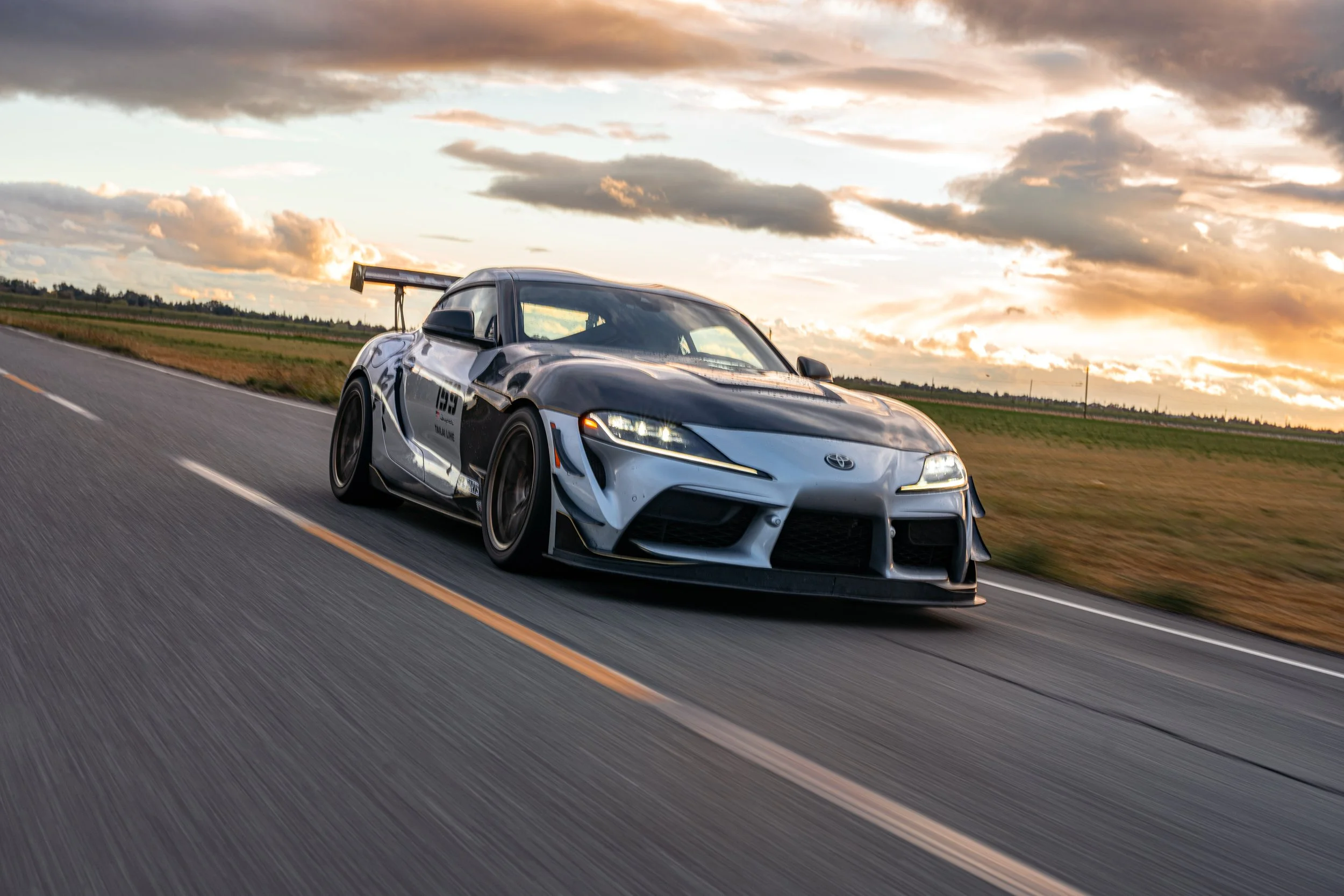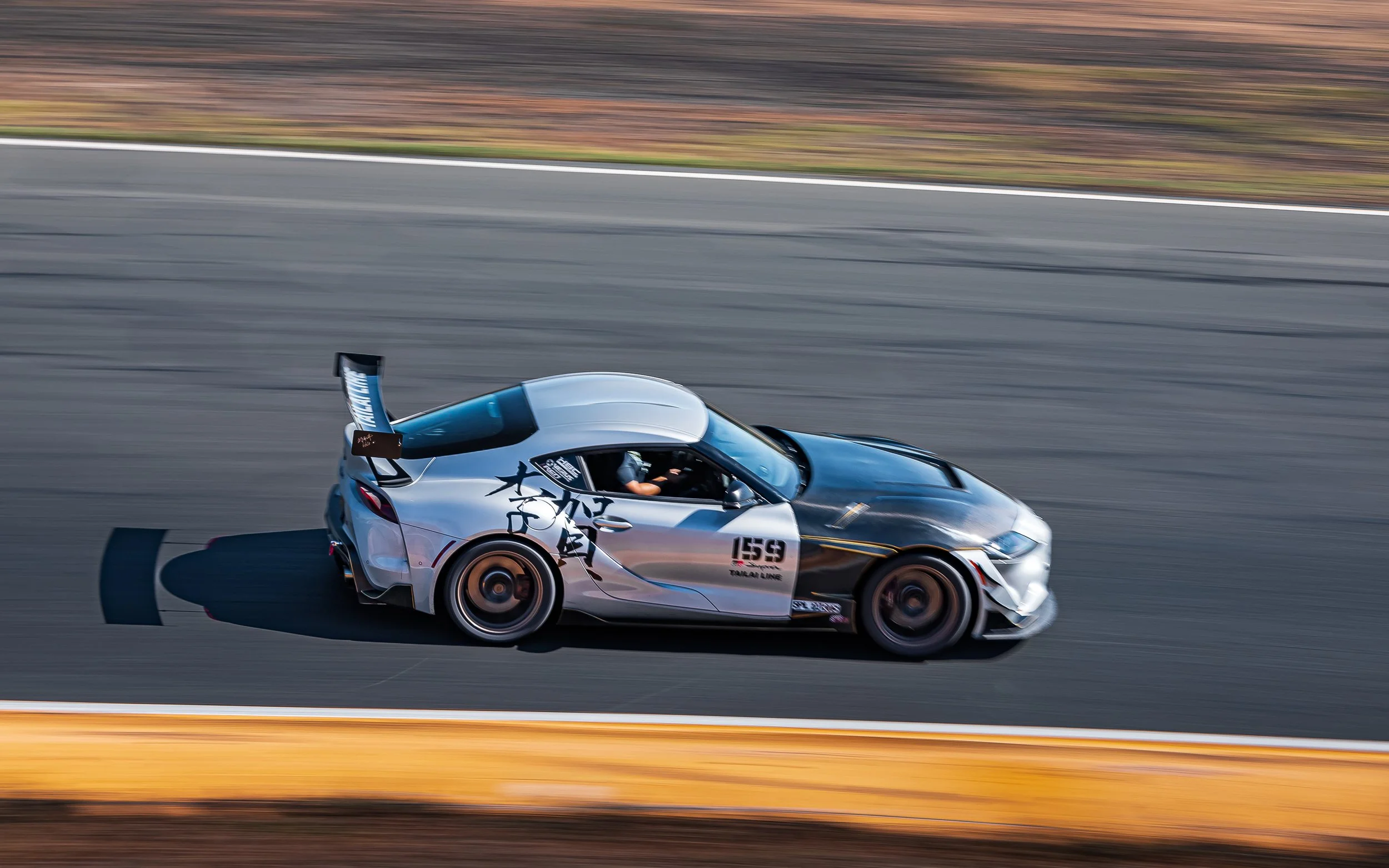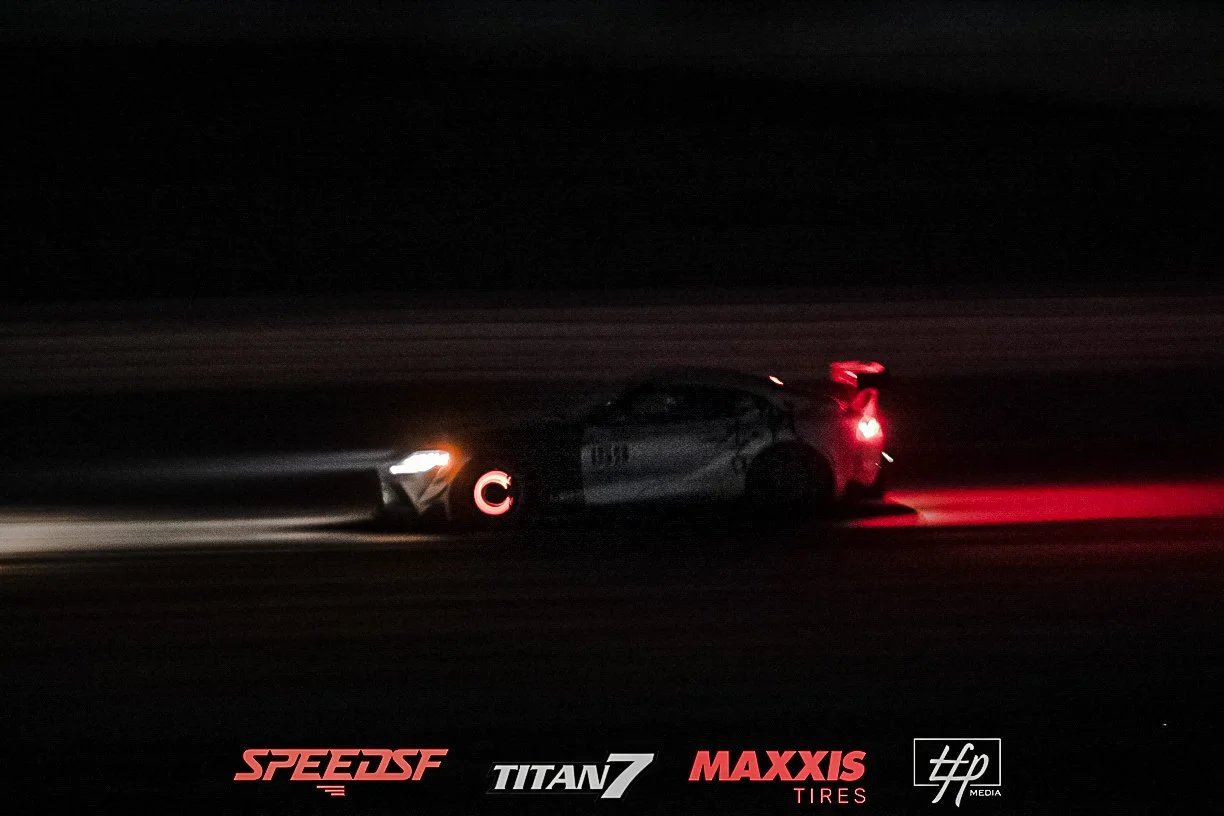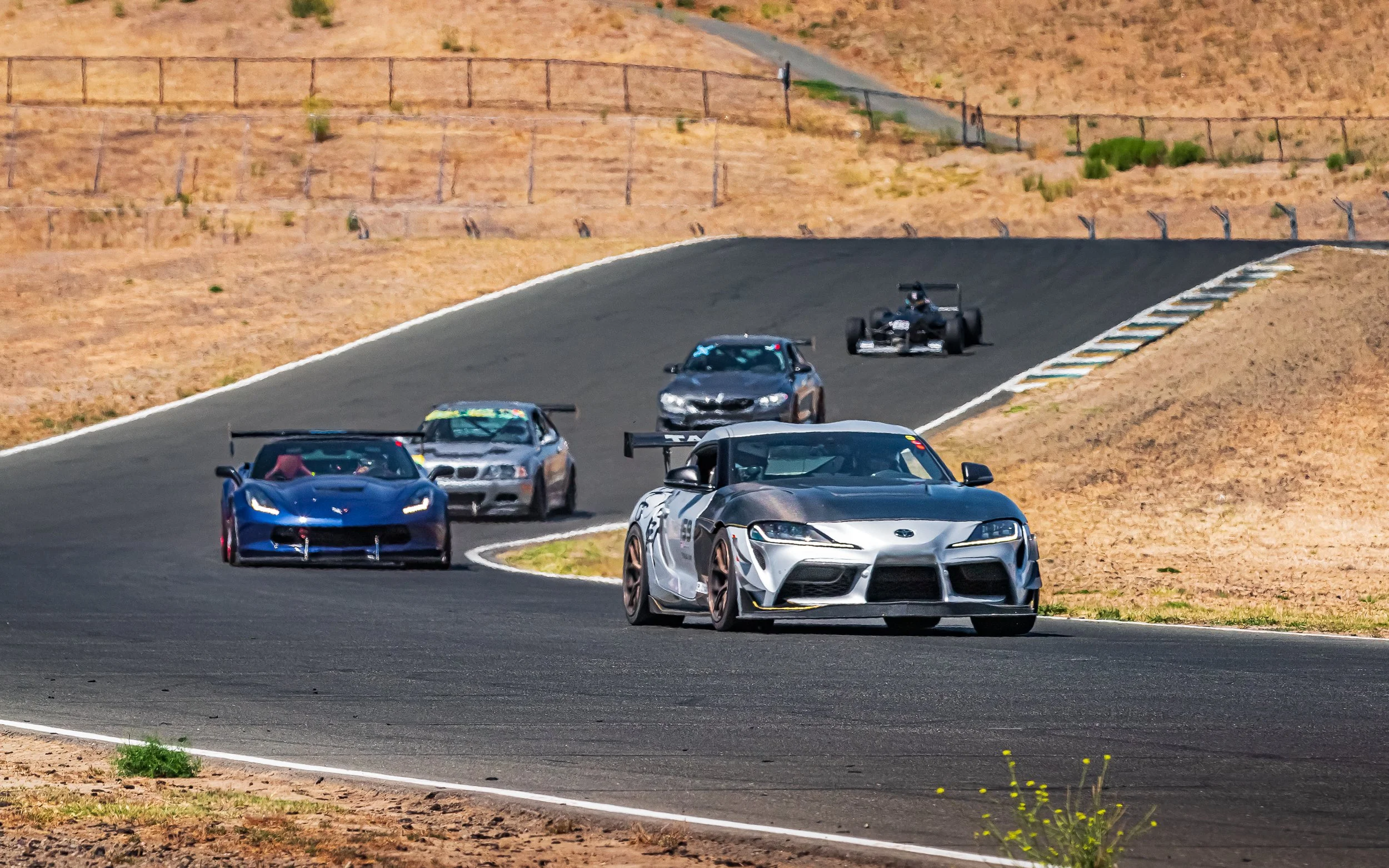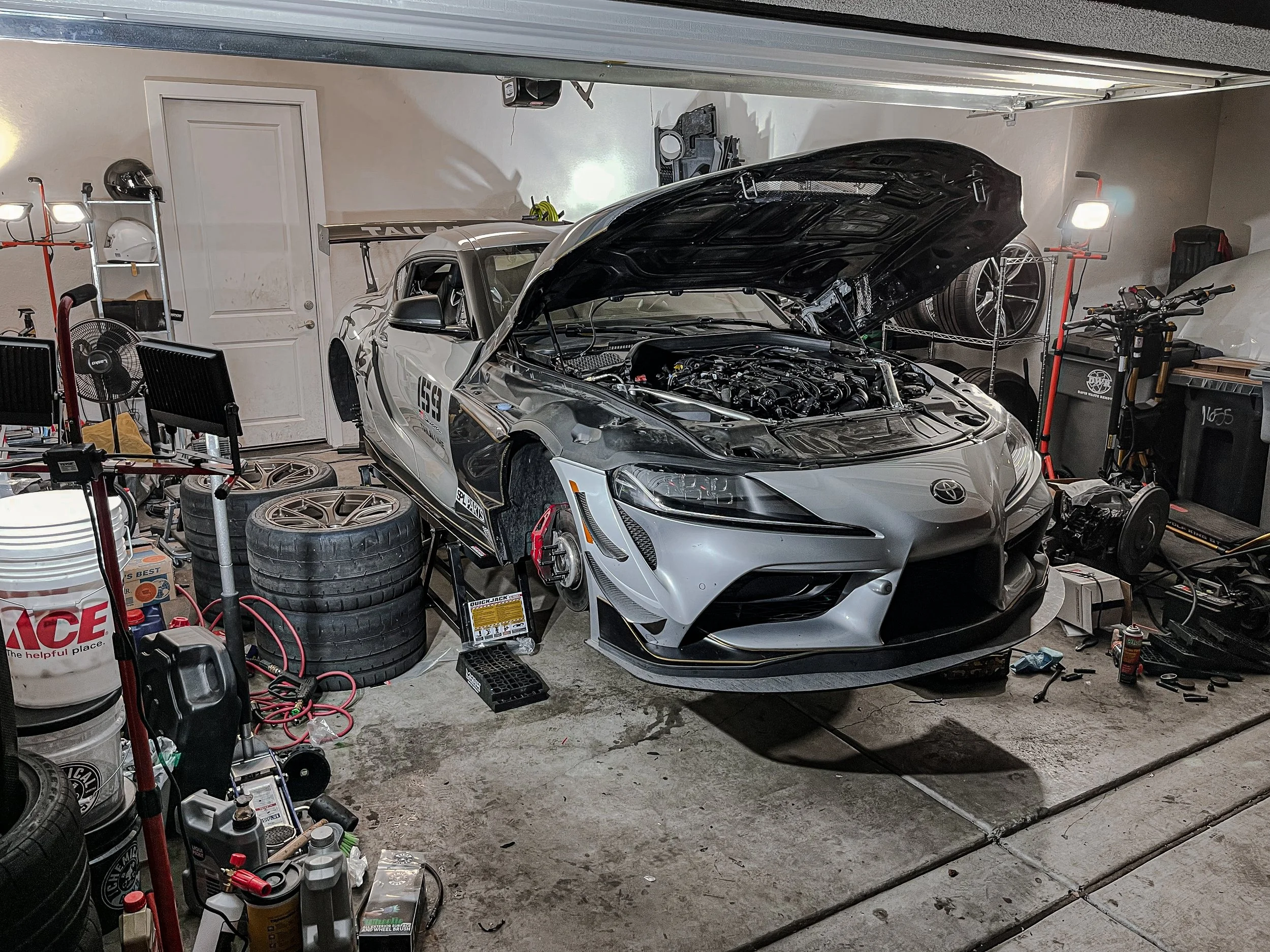Tailai's Supra: Keep it Simple, Keep it Sane
Started tracking in 2018 after moving to the States to study at UC Davis. Being an undergrad student, Tailai time was booked solid. Even so, he had an image of Sonoma Raceway, an image he’d had in his mind since playing Gran Turismo in his early teens, and he knew he’d have to find a way to experience it.
With no real knowledge of the trackday landscape, he booked a three-day advanced driving course at the Simraceway Performance Driving Center, where he was able sample the circuit and the strengths of his daily, an E92 M3. “I didn’t know anything then, so I kept the stock pads and went to drive. The only thing I added was a big wing, because it was cool.
The car was stable and forgiving, and the classes went off without a hitch. The subsequent visits to the track weren’t always failure-free, though. “Whenever I tried to push, something broke.” He endured the bills and, without much of a racing education, he started modding the car to make more power — something entirely predictable. He slapped on a VF supercharger and, after it was installed incorrectly, he blew the motor.
Disappointed, he sought out something reliable with more tuning potential. He didn’t like how American cars drove, so no Camaro. The atmospheric BMW engines weren’t all that interesting to him, but the potential of some of the turbo cars caught his eye.
“I first bought the Verus full aero, which I now see was foolish. I should’ve started with suspension, but the aero kit was too cool to ignore,” he laughed.
He didn’t exactly settle on another car from the same marque, but he wasn’t far off. After finding an impressive deal on a 2021 Supra, he pulled the trigger.
The first outing in it, he left it completely stock. Very capable already—capable of lapping Sonoma in the 1:53s. By this time, he’d started studying what would keep his ass in the seat and what would drop times the fastest.” I wanted the car to be reliable, so I didn’t touch the powerplant. There were more important things to change.”
Maybe the pleasure of seeing the car kitted out was the right move, because it wouldn’t let him down like his first set of coilovers would. The first set of KW Clubsports broke after a few days. Fortunately, his growing social media presence helped him secure a more track-oriented setup; KW reached out and offered him a set of Competition coilovers.
Then, seeing how easily he was squeezing noticeable performance from the package, he got a little smarter with his tuning approach. He hit the books hard and called on his years of building soccer robots for RoboCup Junior. With his analytical mind whirring away, Tailai could not ignore the way Supra’s weight was working against him. “Weight savings starts out cheap, but it gets pricey pretty quickly,” he admitted. Just by pulling the carpets, seats, adding a cheap Chinese fiberglass hood, and changing the battery, he trimmed an impressive 200 pounds from the car, and only spent an afternoon a few hundred dollars.
Less mass saves some strain on the binders, which don’t need too much help. Pads from CSG, stock rotors and calipers, a basic ducting kit, and even with Goodyear Supercar 3Rs and the aero loading, the brakes last an entire session without fade.
Mods were kept minimal. A set of SPL control arms for more camber and toe adjustment, a Sparco bucket seat, and a chopped exhaust rounded out the short list. Fortunately, the A90 just doesn’t need much help from the factory — just a sportier alignment:
With Jackie Ding’s advice, he increased front camber to -3 degrees, increased the rear to -2.8, set the front toe at 0, and, to minimize some of the bump steering, a smidge of rear toe-in. About 0.3 degrees, actually.
Tuning took some time to understand, but like his choice in modifications, he fumbled his way through it until he could learn enough to make the right decisions. “At first, I had the rear wing angle turned up to the max before adding the splitter, so at 8 at Thunderhill East, the car just went straight. That scared me. After that, I started to read up on aero balance.”
After adding a splitter and trimming out the rear wing, he found a sweet spot that gives him some reassuring push in faster corners. Combine that with a car that is easily rotated on throttle in the slower corners, and it’s not hard to see why he’s gone so much faster in the span of a year.
“As soon as I touch the throttle, I like it to rotate a little,” he explained.
And with that, he had a platform he could take to the track and run lap after lap. It’s super reliable. After forty-minute sessions at Thunderhill in 100F weather, the brakes and the engine remain cool. The Supra is happy to take the abuse.
His dedication to the craft, complemented by his studious approach and background in robotics helped him go from a total novice to someone fighting at the front of Speed SF Challenge’s S2 class in just two years. You don’t make that progress without cracking the books and being a little ingenious. Now pursuing his PHD in electrical engineering, he is confident he took the right path. “If you don’t have a budget to hire an engineer, you have to learn to do it yourself.”
Tailai has done most of the work in his garage. “From chassis tuning, I gained probably two seconds.”
And although he sees the importance in building a dependable, approachable, reliable car, he knows that racing is not just an engineering exercise. It takes practice, physical fitness, and coordination. So, after he adds the new Spage aero, the rest will come down to him. “There’s still a lot more potential there that I’m not getting. Honestly, I’m still a pretty bad driver,” he said.
For someone who’s currently lapping Sonoma in the 1:45s, but had no idea what an apex was a few years ago, that is a masterpiece of self-effacement. Not everyone advances this quickly in the sport, but Tailai’s taken the sensible approach and put track time first. If that isn’t a compelling case for reliability, I don’t know what is.

